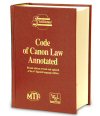A note on a footnote in Ryan-Grisez
Now, regarding Ryan-Grisez itself, I have one quibble for clarity’s sake.
Footnote 89 in Ryan-Grisez (p. 387) reads: “The 1983 Code of Canon Law (c. 1061 § 1) apparently takes that view [i.e., that ‘ratum’ in canon law refers only to sacramental marriages] for granted. To say that only ratum et consummatum marriages are indissoluble, however, need not mean that only sacramental marriages are indissoluble. Ratum could be used to characterize any covenantal marriage, whether sacramental or not. While the word is often used as a synonym for ‘sacramental,’ ratum actually means ‘reckoned, calculated, fixed by calculation; hence, fixed, settled, established, firm, unalterable, sure, certain, valid’ (Charlton T. Lewis and Charles Short, A Latin Dictionary founded on Andrews’ edition of Freund’s Latin Dictionary [Oxford: Clarendon, 1879] 1566).”
Okay, let's unpack this, shall we?
The 1983 Code of Canon Law (c. 1061 § 1) apparently takes that view [i.e., that ‘ratum’ in canon law refers only to sacramental marriages] for granted.
Well, ‘taking X for granted’ is not how I would describe the Code’s use of the word "ratum" here; rather, I would say that ‘ratum’ is simply a term of art which, in canon law, refers to marriage between two baptized persons. Over the centuries, the Church has found it pastorally and legally useful to distinguish three kinds of marriages, namely, those between (a) two non-baptized persons, (b) one baptized person and one non-baptized person, and (c) two baptized persons. The word “valid” or "ratified" could describe any or all of these fact patterns, but because canonically each situation is distinguishable, the word ‘ratum’ is, by convention, applied only to the last set of marriages.
To say that only ratum et consummatum marriages are indissoluble, however, need not mean that only sacramental marriages are indissoluble.
True, and canon law does not say that; still, canonists would phrase this line more precisely as something like “To say that only ratum et consummatum marriages are (intrinsically and extrinsically) indissoluble, however, need not mean that only sacramental marriages are (intrinsically) indissoluble.” I wouldn't phrase it so awkwardly, but the point is: the Code is not assuming too much about the dissolubility of non-sacramental marriages in its assertions about the indissolubility of certain sacramental marriages.
Ratum could be used to characterize any covenantal marriage, whether sacramental or not.
Well, sure, could be, but isn’t, at least not in canon law. That’s what terminological conventions are all about, using an otherwise equivocal term in a univocal way. Similarly, after the first exercise of marital rights by the spouses, any of these marriages could be termed “consummatum”, but again, by convention—and because consummation has canonical consequences only for ratum marriages—the term “consummatum” is used only in the context of sacramental marriages.
While the word is often used as a synonym for ‘sacramental,’ ratum…
Umm, careful. Canonists don’t use the word “ratum” as a synonym for “sacramental”, but rather they use the term “ratum” to describe marriages that are not only presumptively valid, but are sacramental, as well.
…ratum actually means ‘reckoned, calculated, fixed by calculation; hence, fixed, settled, established, firm, unalterable, sure, certain, valid’ (Charlton T. Lewis and Charles Short, A Latin Dictionary founded on Andrews’ edition of Freund’s Latin Dictionary [Oxford: Clarendon, 1879] 1566).
This phrasing seems to imply that canonists are "actually" misusing the word “ratum”; we are not, we are simply using it in conventuated sense to refer to those marriages, presumed to be valid, between two baptized persons.









<< Home